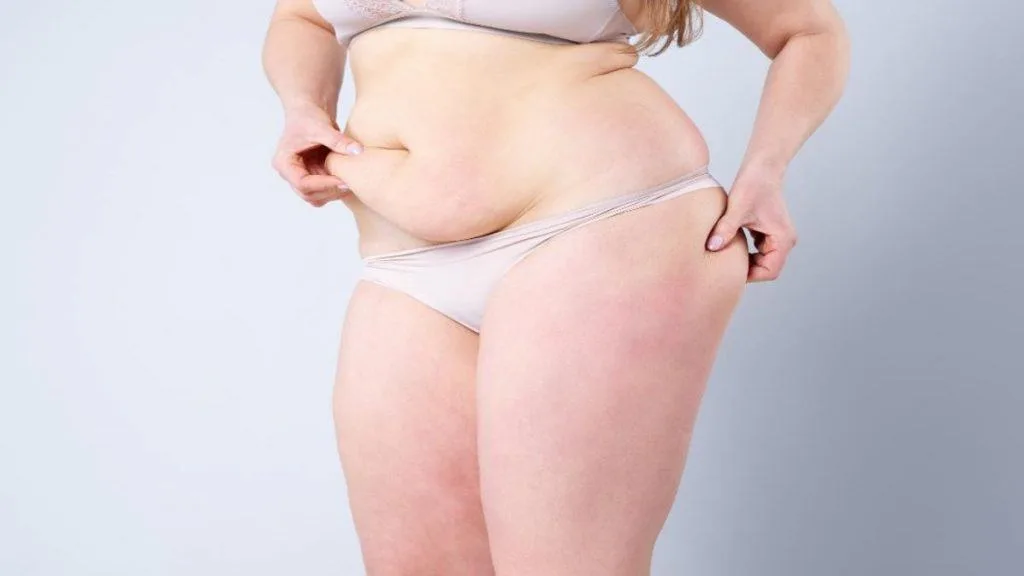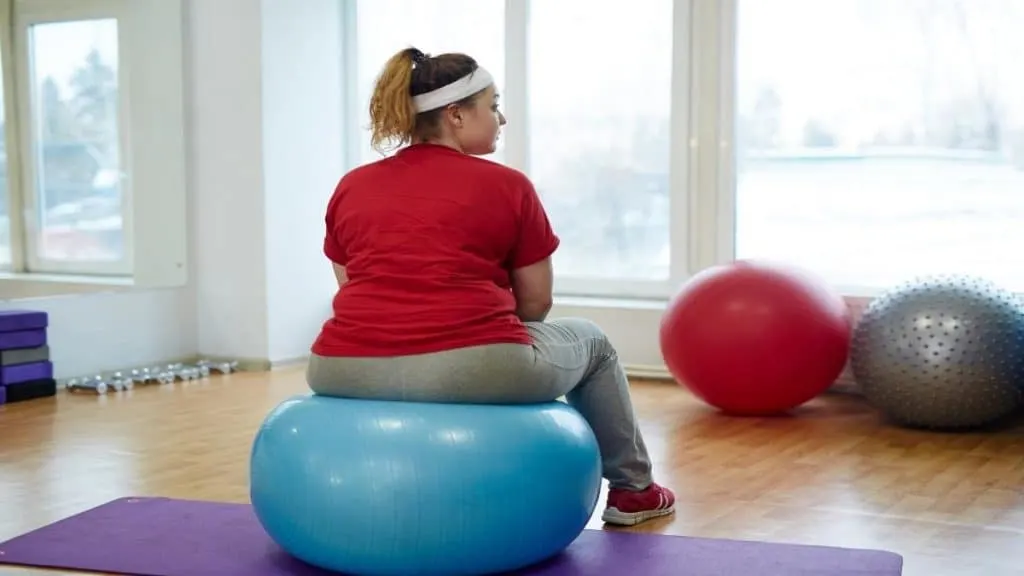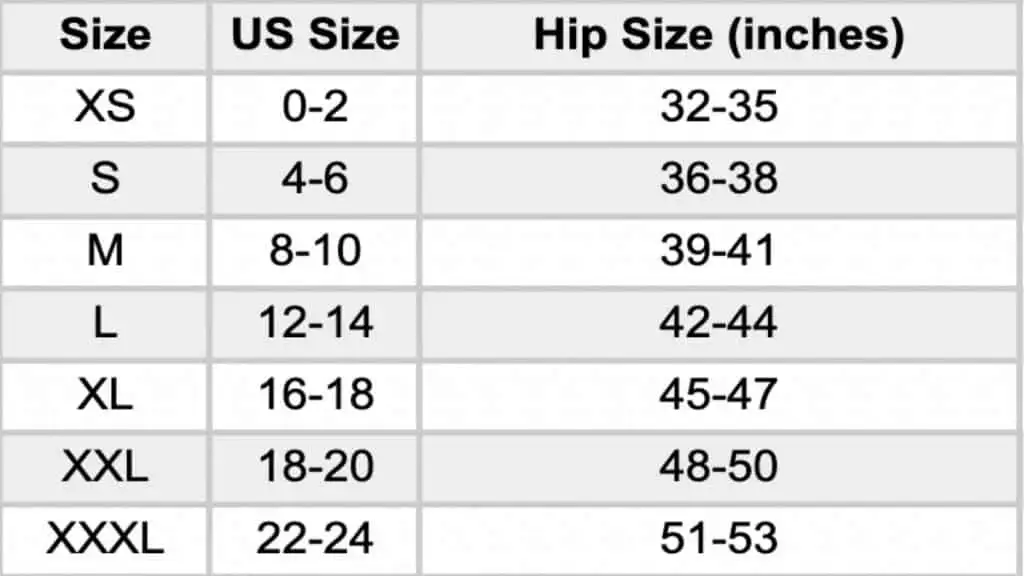If you have 50 inch hips, then you definitely don’t have a normal hip size for females or males. Indeed, even overweight individuals tend not to have a 50 inch hip size.
So if you’re curious why some people actually have 50″ hips, then this article is for you. Using real-life anthropometric measurement data, I’ll explain why having a 50 inch butt isn’t a good thing for your physical health.
Related Hip Size Guides:
- Average male butt size
- 49 inch hips
- 51 inch hips
- 52 inch hips
- 53 inch hips
- 54 inch hips
- 55 inch hips
- 56 inch hips
- 57 inch hips
- 58 inch hips
- 59 inch hips
How big are 50 inch hips for a woman?

Are 50 inch hips big for a woman? Yes, 50 inch hips are extremely big for a woman because they’re a whopping 10 inches bigger than average—an average that you could say is already pretty large.
Even though studies suggest that women with big hips have better protection against heart disease and cardiovascular disease than slim-hipped women, [1] this almost certainly doesn’t include women 50 in hips. Why not?
Because if you have 50 inch hips, then it’s very likely that you’re overweight or obese, which means that you probably have a lot of belly fat as well as gluteofemoral fat. When you have a lot of fat around your stomach, you have a higher chance of accumulating visceral fat, which is a dangerous type of fat that accumulates around your internal organs. [2]
So, to put it bluntly, 50″ hips are far too large for a woman to live in good health.
However, if you do have 50 in hips, then you shouldn’t despair. Although many women tend to store a lot of stubborn fat around their hips, you can absolutely reduce the size of your hips by following proven fat-burning tactics. More on those later.
How large are 50 inch hips for a man?

For a man, 50 inch hips are very large indeed because they’re 11 inches bigger than usual for an adult male. If you’re a man who has a 50 inch hip size, then that’s a strong indication that you’re obese and should try to lose weight.
As with many women, there are also a lot of men who have large hips. For example, you might have wide hip bones and/or very muscular glutes, which will definitely bulk up your circumference measurement, seeing as the glutes are such a large muscle. [3]
However, it’s virtually impossible to have 50 inch glutes purely due to having wide bones and a lot of muscle mass. Indeed, to get genuine 50″ hips, you’d need to put on a lot of body fat, which pretty much guarantees that you’d have an excessively high BMI.
So, in summary, 50 in hips are too big for a man to enjoy his best health because you can’t get natural 50 inch hips without accumulating dangerous amounts of visceral fat.
Is it bad to have 50 inch hips?

Honestly? If you want to live life in good health, then it’s not a good idea to have 50 inch hips because, in order to have 50″ hips in the first place, you’d need to overeat and put on a lot of body fat, which increases your risk of chronic disease and premature mortality.
Of course, you can still embrace your body while having big hips—many women do. But at the same time, you also need to give your health the consideration that it deserves.
However, you can have your cake and eat it too, to an extent. What I mean is that you can lose weight and still have large hips that look even curvier. Let me explain.
When you lose weight, your 50 inch hip size is bound to decrease. But guess what? So is the size of your waist! This loss of inches will result in a lower waist-to-hip ratio, which is to say, a greater size difference between your waist and hips.
What this means for you is that when you lose weight and improve your health, your hips will actually look better because they’ll be bigger in relation to your waist! So yes, you can improve your health and physical appearance simultaneously—even if you’re set on maintaining large hips.
What size are 50 inch hips?

What size are 50 inch hips? It depends on the brand and on the specific item of clothing. That said, in many cases, 50 inch hips work out at a women’s XXL, which is equal to a US size 18-20.
Do many people have a 50 inch butt?

Although there are plenty of obese individuals in our society, there aren’t that many people who have a 50 inch butt because 50 in hips really are a massive size.
Of course, if you’re overweight and you naturally store a lot of your body fat around your hips, then it’s possible to get 50 inch hips naturally.
But to improve your health and wellbeing, you should seek to lose weight by eating in a calorie deficit and increasing your activity level. This can be as simple as walking more, or it can mean actually training with weights in the gym—a great idea if you want to trade some of your hip fat for glute muscle.
It’s also not a good idea to fixate on specific measurements because we’re all built differently. While just about anyone can decrease and increase their measurements, our genetics govern just how slim and how muscular we can get, so focus on losing weight and or/developing your physique rather than on specific measurements.
Conclusion: Is having a 50 inch hip size good or not?

While you shouldn’t be too harsh on yourself for having 50 inch hips—there are other people just like you—it’s also important to remember that you can enjoy much better health (and likely a better figure as well!) by losing some body fat.
Some people will always have larger hips than others due to their bone structure and fat storage genetics, but virtually anyone can change their body if they equip themselves with the right information and then follow a sustainable workout regime.
References
- Heitmann, B. L., Frederiksen, P., & Lissner, L. (2004). Hip Circumference and Cardiovascular Morbidity and Mortality in Men and Women. Obesity Research, 12(3), 482–487. https://doi.org/10.1038/oby.2004.54
- Ross, R., Leger, L., Morris, D., de Guise, J., & Guardo, R. (1992). Quantification of adipose tissue by MRI: relationship with anthropometric variables. Journal of Applied Physiology, 72(2), 787–795. https://doi.org/10.1152/jappl.1992.72.2.787
- Elzanie A, Borger J. Anatomy, Bony Pelvis and Lower Limb, Gluteus Maximus Muscle. [Updated 2022 Mar 28]. In: StatPearls [Internet]. Treasure Island (FL): StatPearls Publishing; 2022 Jan-. Available from: https://www.ncbi.nlm.nih.gov/books/NBK538193/

